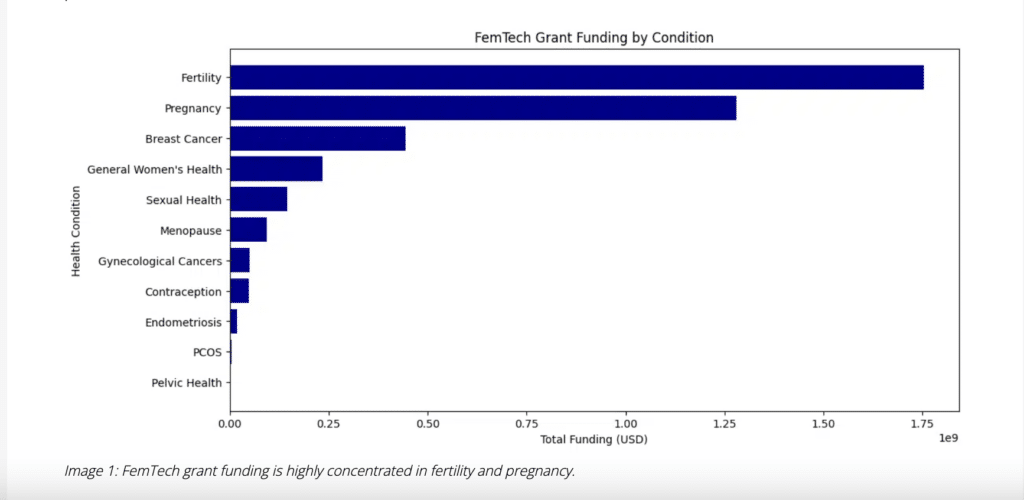The article “Tracking the FemTech Research Boom“ by Emily Alagha, published on Digital Science’s blog, utilizes Dimensions data to analyze the rapid growth of the FemTech sector, highlighting trends, funding disparities, and innovation gaps in women’s health technology.
Key findings using Dimensions data
Funding disparities: Dimensions data reveals that global funding agencies have allocated approximately $1.06 billion to FemTech-related research over the past decade. However, funding is highly concentrated in three specific areas, with a critical area that is dramatically underfunded:
- Fertility: 43.1%
- Pregnancy: 31.4%
- Breast cancer: 10.9%
- Menopause: Only 0.55% (a significant underinvestment)

The data highlights a critical underfunding of menopause research, indicating a broader bias where non-reproductive aging conditions receive less attention.
Patent filings: By analyzing patent data from Dimensions, the study found a strong focus on fertility-related innovations but suggests that FemTech commercialization is heavily skewed toward fertility solutions, leaving other key areas like menopause and sexual health underdeveloped :
- Fertility patents: 55.4%
- Pregnancy patents: 19.8%
- Menopause patents: Only 0.6%
Clinical trials data: Dimensions data on clinical trials mirrors the trends observed in funding and patents:
- Fertility trials: 34.8%
- Pregnancy trials: 32.7%
- Menopause trials: Just 2.3%
The low percentage of trials in menopause and sexual health underscores a lack of clinical validation and development in these critical areas.
Implications and opportunities
The Dimensions-powered analysis underscores the need for a more balanced research and development approach in FemTech. While fertility and pregnancy technologies are advancing rapidly, other essential areas—menopause, sexual health, and non-hormonal contraception—remain neglected.
By leveraging Dimensions’ data-driven insights, researchers, investors, and policymakers can identify critical gaps and drive innovation in underserved areas to create a more comprehensive, inclusive women’s health ecosystem. For a detailed analysis, you can read the full article on Digital Science.
For more information on how to leverage funding data from Dimensions, contact the Dimensions team.
